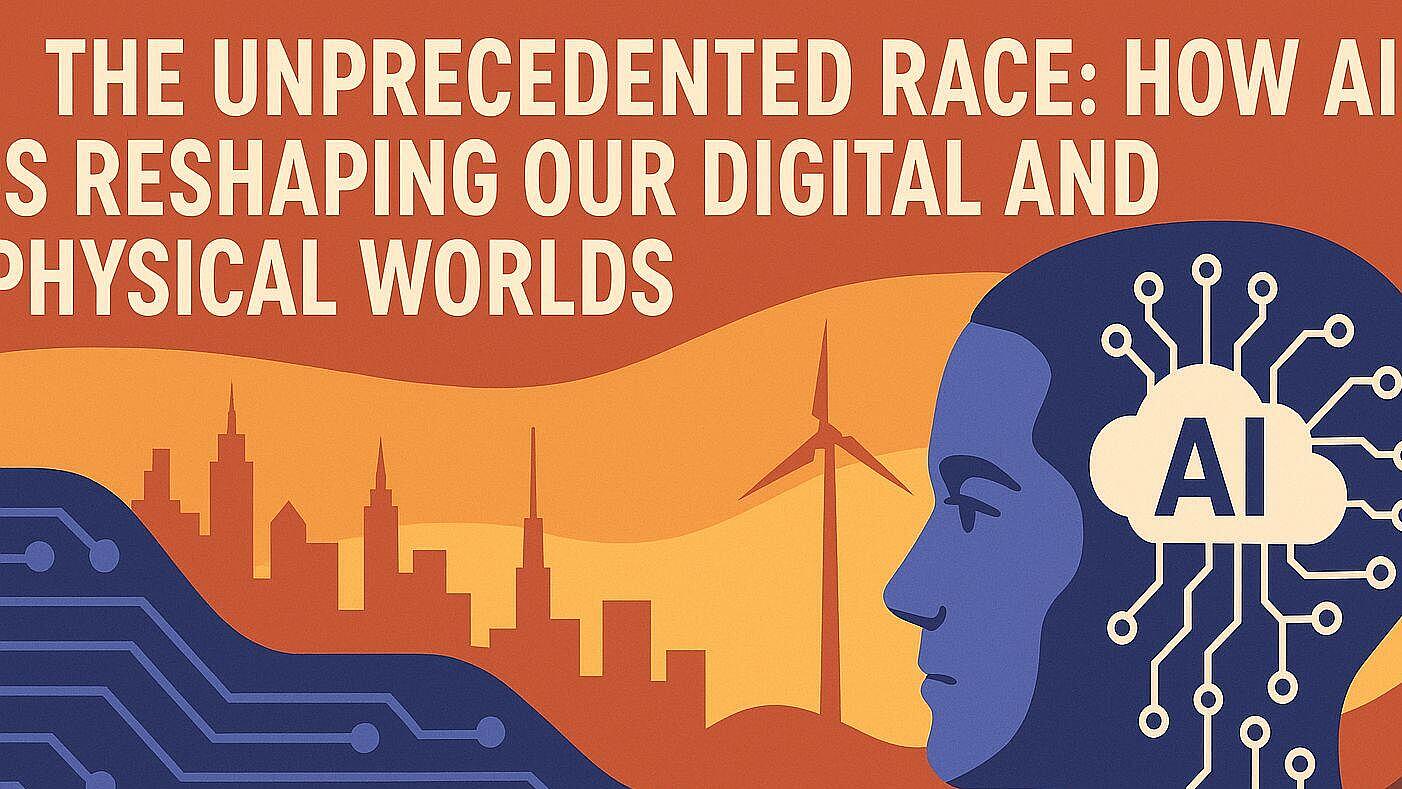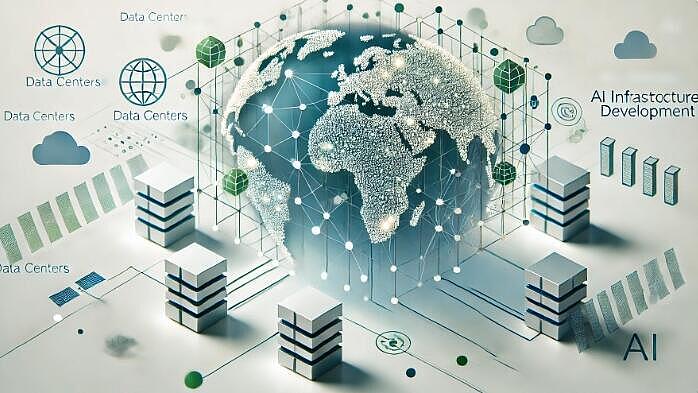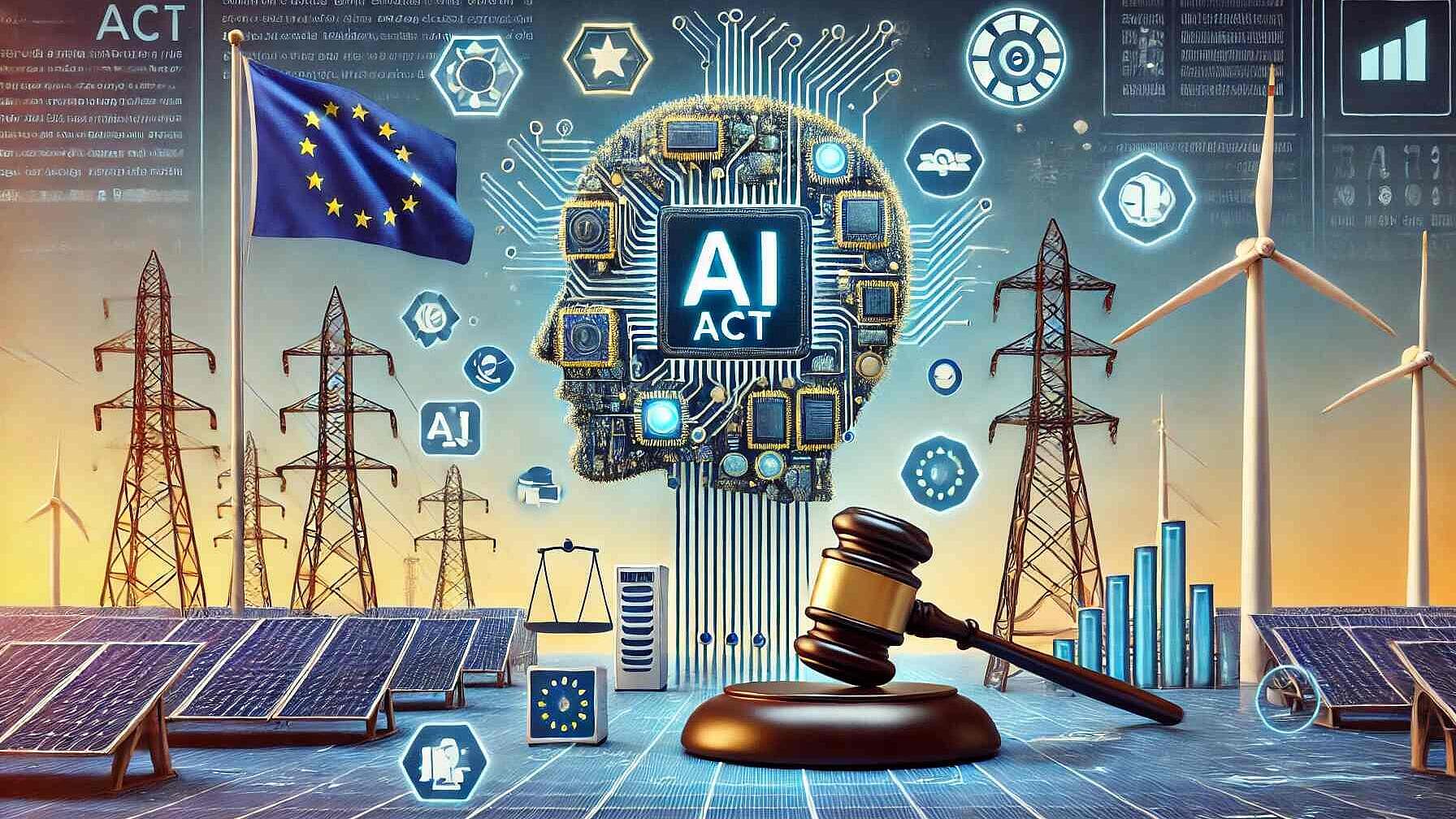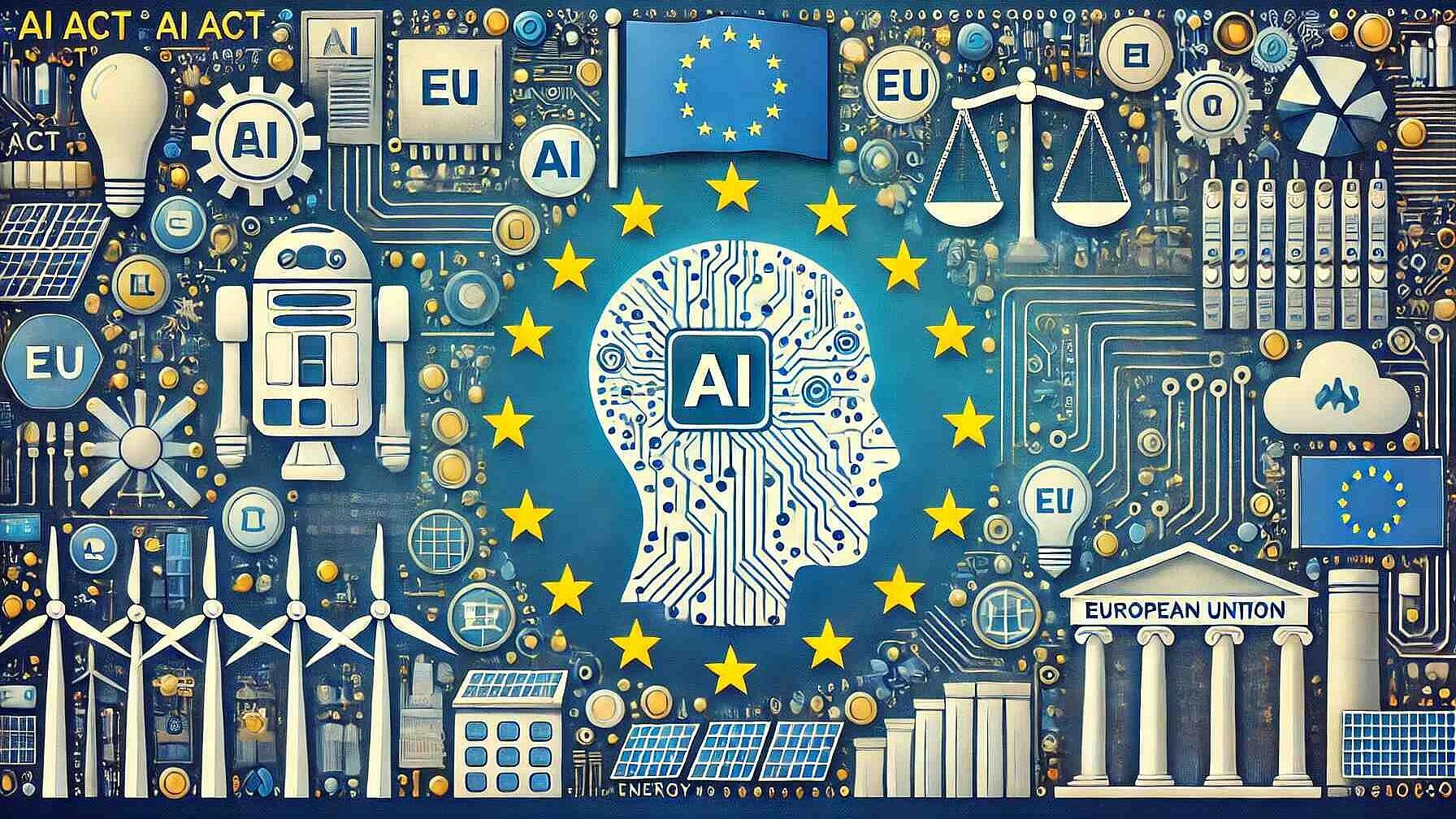 Energy Infrastructure
Energy InfrastructureThe Unprecedented Race: How AI is Reshaping Our Digital and Physical Worlds
Summary
The paper reveals that by 2030, $7 trillion investment will be needed to support data centers for the rise in AI processing demand. McKinsey research predicts $5.2 trillion of this will be for AI-data centers, with $1.5 trillion for traditional IT applications. The investment will primarily support the technology developers, power generation, and construction elements of these facilities. AI data centers require significantly more energy and cooling due to higher power densities and heat generation than traditional centers. This demand is driving energy consumption rates higher and necessitates advanced cooling solutions like liquid cooling.
The semiconductor supply chain is under pressure from the high demand for AI components such as HBM, GPUs, and SSDs, leading to resource shortages and long lead times. Geopolitical factors, such as U.S. tariffs, could exacerbate these challenges, raising costs and adding complexity. In response, procurement strategies must evolve to ensure longer-term planning and supply chain resilience.
AI and ML-based demand forecasting tools are vital for managing the uncertainty in demand and supply, offering potential to increase accuracy and automate decisions previously hindered by legacy systems. These tools enable better inventory planning, and have proven beneficial in cases like a global fashion retailer seeing revenue and margin improvements.
In conclusion, the AI revolution is prompting massive investments, creating opportunities and extraordinary energy and infrastructure challenges. Addressing these will require innovation in hardware efficiency, renewable energy, and smart grid technologies, alongside advanced demand forecasting and planning. The capacity to anticipate compute power demand is crucial for stakeholders across the AI value chain.
Open full article
The Unprecedented Race: How AI is Reshaping Our Digital and Physical Worlds
The age of Artificial Intelligence isn't just a revolution of algorithms and chatbots; it's fundamentally reshaping the very foundations of our digital world, demanding an unprecedented transformation of our global infrastructure. We are witnessing a monumental shift, one that is sparking a $7 trillion race for compute power and straining every link in the supply chain, from semiconductor fabs to power grids. This isn't just about silicon; it's about energy, logistics, and the very ability to predict the future.
The Staggering $7 Trillion Investment
The sheer scale of investment driven by AI is nothing short of breathtaking. A McKinsey research projection reveals that by 2030, data centers worldwide will require $6.7 trillion to keep pace with the demand for compute power. Of this, a staggering $5.2 trillion is earmarked for data centers equipped to handle AI processing loads, with an additional $1.5 trillion for traditional IT applications, culminating in a colossal $7 trillion total investment requirement.
This massive financial commitment is fueled by a confluence of factors:
- The mass adoption of generative AI.
- The integration of AI applications across virtually all industries.
- An intense competitive infrastructure race between hyperscalers and enterprises to build proprietary AI capacity.
- Geopolitical priorities, as governments invest heavily in AI infrastructure.
The lion's share of this investment, 60% ($3.1 trillion) of the $5.2 trillion allocated for AI infrastructure, will flow to technology developers and designers who produce chips and computing hardware. Another 25% ($1.3 trillion) will go to "energizers" for power generation, transmission, cooling, and electrical equipment, while 15% ($0.8 trillion) will be directed to "builders" for land and site development. This signifies a fundamental reorientation of capital toward the very backbone of AI.
The Insatiable Appetite: Power and Cooling Crisis
While the financial figures are immense, the environmental and infrastructural challenges are equally profound. AI computations generate significantly more heat than traditional computing tasks. This means AI data centers are not merely scaled-up versions of their predecessors; they are fundamentally different beasts requiring bespoke solutions.
Consider the stark differences:
- Purpose and Workload: Traditional data centers support general computing like web hosting and databases. AI data centers are optimized for processing massive volumes of data, running deep learning models, and supporting AI-driven tasks like natural language processing.
- Hardware: Traditional centers rely on CPUs. AI centers heavily utilize GPUs (Graphics Processing Units), TPUs (Tensor Processing Units), and other specialized AI accelerators, which can process thousands of tasks simultaneously.
- Cooling and Power Consumption: This is where the divergence is most critical. Traditional facilities have substantial cooling, but AI data centers require advanced solutions like liquid cooling to maintain efficiency and prevent overheating due to the extreme heat generated by high-power GPUs.
- Power Density: AI-optimized data centers commonly operate at power densities of 25-35 kW per rack, approximately three times higher than traditional enterprise facilities. Some are even moving from 4-9 kW per rack to an astounding 100-130 kW.
This shift has created an unprecedented energy crisis. AI data centers are consuming energy at roughly four times the rate that more electricity is being added to grids. In the U.S. alone, data centers consumed about 4.4% of total electricity in 2024 (176 terawatt hours), projected to surge to between 6.7% and 12% (325 to 580 TWh) by 2028. Globally, the rate of consumption is increasing 30% per year due primarily to AI, with the United States and China accounting for about 80% of that increase. The power demands of AI data centers between 2028 and 2030 are expected to increase by 350 TWh, which is nearly three times the energy generated by the Hoover Dam, Palo Verde nuclear power plant, and Three Gorges Dam combined.
This "crisis ahead" means the industry must prioritize efficiency from the chip level up, including reducing transmission distances for electricity and limiting data movement, with 3D-IC packaging playing a key role. Better cooling solutions like direct liquid cooling and immersion cooling are no longer optional, but essential, even if they add complexity to chip and system design.
The Supply Chain Labyrinth: Chips, Tariffs, and Uncertainty
The explosive demand for AI is pushing the semiconductor supply chain to its breaking point. Crucial components like high-bandwidth memory (HBM), high-performance graphics processing units (GPUs), and advanced solid-state drives (SSDs) are in severe shortage. NVIDIA’s H100 and AMD’s MI300 series GPUs have seen near-immediate sellouts, and Nvidia's next-generation Blackwell GPUs are already backlogged for a year or more. HBM3 producers are reporting six- to twelve-month lead times, with prices rising 20-30% year-over-year.
The bottleneck isn't just in fabrication; it's also in packaging and integration. Advanced techniques like TSMC’s CoWoS packaging, critical for stacking HBM with AI processors, are fully booked through 2025. Despite a projected CAGR of 50% between 2022 and 2026, even reaching 90,000 wafers per month by the end of 2026, it's still not enough to meet demand. The concentration of chip production in the Asia-Pacific region further highlights the fragility, as exemplified by the temporary halt in output caused by a 7.4-magnitude earthquake in Taiwan.
Adding another layer of complexity are geopolitical factors, particularly proposed U.S. tariffs on semiconductor imports. These could increase component costs by 10-30% and compound duties across the international manufacturing steps of a single AI chip. The lack of short-term replacements for specialized technologies means companies cannot easily circumvent these issues, forcing vendors to adjust pricing, delay shipments, and even reroute logistics.
For procurement leaders, this volatile environment demands a structural rethink of strategies. Reacting is no longer sufficient; instead, they must engage in long-horizon planning, early commitment through multi-year purchase agreements, and strategic stockpiling (though in moderation to avoid past excesses). Diversified sourcing, even from regional players at a modest cost premium, is becoming critical to reduce exposure to single-point failures.
The Strategic Imperative: Predictive Power in an Uncertain World
Despite the enormous growth potential, CEOs are hesitant to invest in compute power at maximum levels due to limited visibility into future demand and the long lead times of infrastructure projects. This uncertainty underscores the critical need for sophisticated demand planning.
Enter AI and Machine Learning (ML) based demand forecasting. These advanced methodologies are poised to revolutionize how companies manage their supply chains by:
- Processing vast amounts of data at unparalleled scale, speed, and sophistication.
- Sensing real-time market changes and predicting emerging trends.
- Integrating all available data—both internal and external (e.g., weather, traffic, economic indicators, social media trends, competitor information)—to make highly accurate demand predictions, sometimes up to 98% accuracy.
- Automating operational decisions, such as fulfillment and replenishment, which was previously impossible with rigid legacy systems.
This shift from traditional "deterministic planning" to stochastic/probabilistic scenario-driven planning allows companies to account for a range of possible outcomes and risks. It enables capabilities like Demand Sensing, which uses real-time market signals to improve inventory planning accuracy, and Demand Shaping, which predicts demand locations and influences procurement and production through incentives.
A compelling use case from the sources highlights the tangible benefits: a global fashion retailer implemented AI and ML solutions, resulting in a 15% increase in revenue, a 30% reduction in global inventory, zero stock-outs, and an overall margin improvement of 15%. This success was achieved by unifying distribution channels, creating a single view of inventory, and leveraging model-based decision-making with high forecasting accuracy.
Ultimately, the ability to predict and anticipate compute power demand will determine who emerges as the winners in the AI-driven computing era. This applies not only to data center operators but also to companies throughout the AI value chain, from chip manufacturers to enterprise solution providers.
Charting the Future
The AI revolution is a powerful force, creating immense opportunities but also significant challenges. The staggering $7 trillion investment in data centers is a testament to the scale of this transformation. However, it also brings into sharp focus the urgent need to address the accompanying energy crisis and the fragility of a global supply chain under immense strain.
The path forward requires a multi-pronged approach: sustained innovation in energy-efficient hardware and advanced cooling, strategic investments in renewable energy sources and smart grid technologies, and the widespread adoption of AI-driven demand forecasting and operational planning. Only by addressing these interconnected challenges with foresight and agility can the world truly harness the full potential of AI, ensuring its power doesn't outstrip our capacity to sustain it. The race is on, and the stakes couldn't be higher.
Sources (top sources only)
AI Boom to Drive USD7 Trillion Global Investment in Data Centers
An Investor's Guide to the Artificial Intelligence Value Chain
Crisis Ahead: Power Consumption in AI Data Centers
The Cost of Compute: A USD 7 Trillion race to scale data centers
Sustainable Energy Strategies for Data Centers in the AI Area



